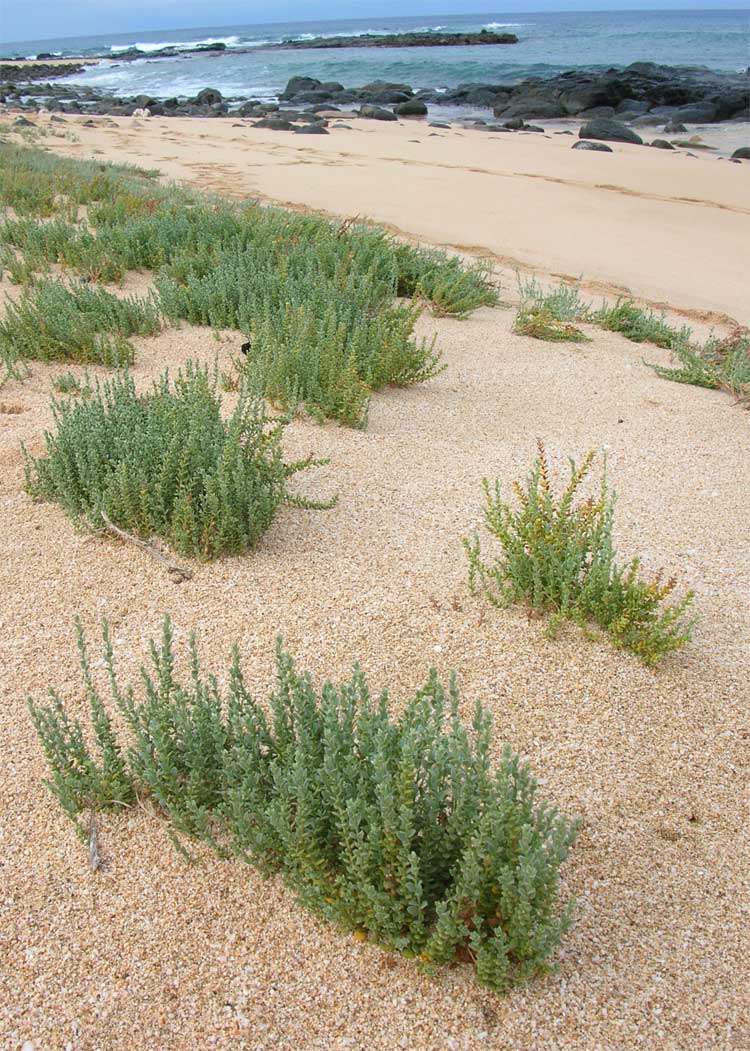
Cressa truxillensis (Forest & Kim Starr)
Classification System: APG IV
Superregnum: Eukaryota
Regnum: Plantae
Cladus: Angiosperms
Cladus: Eudicots
Cladus: Core eudicots
Cladus: Asterids
Cladus: Lamiids
Ordo: Solanales
Familia: Convolvulaceae
Tribus: Cresseae
Genus: Cressa
Species: Cressa truxillensis
Name
Cressa truxillensis Kunth in F.W.H.von Humboldt, A.J.A.Bonpland & C.S.Kunth, Nov. Gen. Sp. 3: 93 (1819).
Synonyms
Homotypic
Cressa cretica var. truxillensis (Kunth) Choisy in A.P.de Candolle, Prodr. 9: 440 (1845).
Heterotypic
Cressa arenaria Willd. ex Schult. in J.J.Roemer & J.A.Schultes, Syst. Veg., ed. 15 bis 6: 207 (1820).
Cressa multiflora Willd. ex Schult. in J.J.Roemer & J.A.Schultes, Syst. Veg., ed. 15 bis 6: 207 (1820).
Cressa australis var. petiolata Meisn. in C.F.P.von Martius & auct. suc. (eds.), Fl. Bras. 7: 329 (1869).
Cressa depressa Goodd., Bot. Gaz. 37: 58 (1904).
Cressa insularis House, Bull. Torrey Bot. Club 33: 315 (1906).
Cressa minima A.Heller, Muhlenbergia 8: 140 (1912).
Cressa vallicola A.Heller, Muhlenbergia 8: 140 (1912).
Cressa erecta Rydb., Bull. Torrey Bot. Club 40: 466 (1913).
Cressa truxillensis var. minima (A.Heller) Munz, Aliso 4: 96 (1958).
Cressa truxillensis var. vallicola (A.Heller) Munz, Aliso 4: 96 (1958).
Distribution
Native distribution areas:
Continental: Northern America
USA (Arizona, California, New Mexico, Nevada, Oklahoma, Oregon, Texas, Utah), Peru, Ecuador, Argentina (Buenos Aires, Chaco, Chubut, Cordoba, Corrientes, La Pampa, La Rioja, Mendoza, Neuquen, Rio Negro, Salta, Santa Cruz, Santa Fe, San Juan, San Luis, Tucuman), Chile (Tarapaca, Antofagasta, Atacama, Coquimbo, Reg. Metropolitana), Paraguay (Alto Paraguay), Uruguay (Montevideo), Revillagigedos Isl. (Isla Socorro, Isla Clarion), Hawaii (Oahu, Molokai, Kahoolawe), Mexico (Baja California Norte, Baja California Sur, Chiapas, Chihuahua, Coahuila, Colima, Durango, Guanajuato, Jalisco, Nayarit, Nuevo Leon, Oaxaca, San Luis Potosi, Sinaloa, Sonora, Tamaulipas)
Continental: Southern America
Bolivia (Cochabamba)
References: Brummitt, R.K. 2001. TDWG – World Geographical Scheme for Recording Plant Distributions, 2nd Edition
References
Primary references
Kunth, C.S. in F. W. H. A. von Humboldt et al., 1819. Nov. Gen. Sp. 3:93[folio]; 3:119[quarto]. 1819
Links
Govaerts, R. et al. 2019. Cressa truxillensis in World Checklist of Selected Plant Families. The Board of Trustees of the Royal Botanic Gardens, Kew. Published on the internet. Accessed: 2019 November 05. Reference page.
Hassler, M. 2019. Cressa truxillensis. World Plants: Synonymic Checklists of the Vascular Plants of the World In: Roskovh, Y., Abucay, L., Orrell, T., Nicolson, D., Bailly, N., Kirk, P., Bourgoin, T., DeWalt, R.E., Decock, W., De Wever, A., Nieukerken, E. van, Zarucchi, J. & Penev, L., eds. 2019. Species 2000 & ITIS Catalogue of Life. Published on the internet. Accessed: 2019 November 05. Reference page.
International Plant Names Index. 2019. Cressa truxillensis. Published online. Accessed: November 05 2019.
Tropicos.org 2019. Cressa truxillensis. Missouri Botanical Garden. Published on the internet. Accessed: 2019 November 05.
USDA, ARS, Germplasm Resources Information Network. Cressa truxillensis in the Germplasm Resources Information Network (GRIN), U.S. Department of Agriculture Agricultural Research Service. Accessed: 09-Oct-10.
Vernacular names
English: Spreading alkaliweed
Cressa truxillensis is a species of flowering plant in the morning glory family known by the common name spreading alkaliweed. It is native to the western United States and Mexico, where it grows in habitat with saline or alkaline soils, such as beaches, desert flats, and playas.
This is a perennial herb producing an erect stem with many branches up to about 25 cm (10 in) tall. The clump of stems is densely lined with silky hairs and studded with many small hairy oval leaves, each under a centimeter long. Flowers appear in the axils of the uppermost leaves. Each has a white corolla with five pointed lobes surrounded by hairy green sepals. There are five protruding stamens and two styles.
Retrieved from "http://en.wikipedia.org/"
All text is available under the terms of the GNU Free Documentation License

